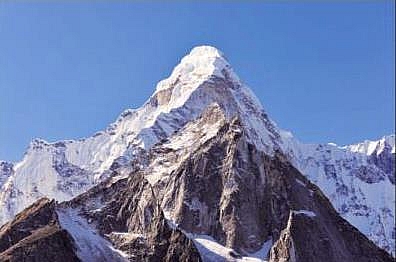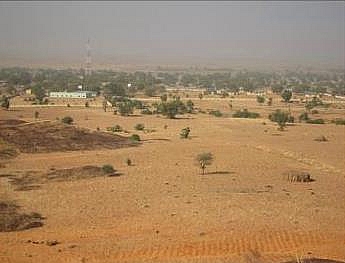Table of Contents
The earth is formed of diversified physical structures which are known as landforms. These physical structures include the high mountains, vast traces of plain lands and also features of intermediate heights. The mountainous regions cover about 18 per cent, plateaus and hills about 24 per cent and the plain lands about 58 per cent of the total area of the earth. There are certain processes that are responsible for the development and depositional features on the earths surface, they include running water, glacial ice, wind and waves.
Landforms shaped by running water are conveniently describes as fluvial landforms. Fluvial land forms are shaped by fluvial processes of overland flow and stream flow, weathering and slower forms of mass wasting, such as soil creep, operate hand in hand with overland flow and cannot be separated from the fluvial processes. Fluvial landforms and the fluvial processes dominate the continental land surfaces. Throughout geological history glacial ice has been present only in comparatively small global areas located in the polar regions and in high mountains.
Landform produced by wind action occupy only trivially small parts of the earth surfaces. However, landforms produced by waves and currents are restricted to a very narrow contact zone between oceans and continents. In terms of area, the fluvial landforms are dominant in the environment of terrestrial life and are the major source areas of human food resources through the practice of agriculture. Almost all lands in crop cultivation and almost all grazing lands have been shaped by fluvial processes.
What are landforms?
Landforms are surface configuration of the land surface taking distinctive forms and shapes and are produce by natural forces and processes. By form is meant the physical dimensions of a landform or area of relief (its size and shape).
Landforms are natural features of the solid surface of the Earth. Landforms together make up a giventerrain, while an assemblage of landforms make up a landscape. These natural features are found also on otherplanetary body apart from the Earth. Two broad categories of landforms are recognized namely:
- Initial landforms- landforms produced directly by external earth processes of volcanism and diastrophism.
- Those land form produced by external earth processes of erosion, deposition, weathering and mass wasting, these are collectively known as sequential landforms. There are three major types of landforms which include mountains, plateaus and plains, other minor landforms includebuttes,canyons,valleys, andbasins.The highest landform on Earth is a mountain:Mount Everestin Nepal. This mountain measures 8,850 meters (29,035 feet) abovesea level. It is part of the Himalaya range that runs across several countries in Asia.
Types of landforms
There are three major types of landforms namely:
- Mountain llandform
- Plateau landform
- Plains landform
Mountain
A mass of rock considerably very high occupying a vast area is known as a mountain. Higher altitude and steep slopes are its main characteristics. This altitude may reach to several thousand metres from the sea level. Some of the mountains may be located in isolation. For example, the Kilimanjaro of East Africa. Again some mountains with several peaks may cover a large area (several thousand kilometres). This type of mountains are folded like the waves. For example, the Himalayan Mountain which extends from Pamir Knot in the east. The Rocky and the Appalachian Mountains of North America, the Andes of South America, the Alps, the Ural, the Caucasus of Europe and the Fujiyama of Asia and others some these examples. Several mountain building processes known as Orogenesis work together in the formation of the mountain. Greek word Oros means mountain and Genesis means formation or creation. Tremendous weathering particularly the wind, water and glacier bring substantial changes in the landforms. There four types of mountains namely: fold mountain, block mountain, volcanic mountain and residual mountain.
Plateau
The vast plain area lower than the mountain but higher in elevation than the plain land is known as Plateau. The formation of plateau is mainly linked with the mountain building processes. The volcanic lava, in some cases, has formed a vast plain land as in the case of the Deccan Plateau of South India. Besides, the old mountainous regions, by the process of weathering and denudation has been converted into a plateau. According to the mode of location, the plateau may be classified into three types namely: Intermontane Plateau, The Piedmont Plateau and The Continental Plateau.
Plain
A plain is defined as an extensive high land above the sea level with gentle slope. Here, the plain means the land which is less rugged. This type of plains have been formed by the erosional and depositional work of different land forming activities like river, glacier, and wind. Gently undulating land with less rugged relief is most suitable for agriculture, settlement and road construction. So, dense settlements have been developed on the plain lands. On the basis of the origin of the plain land, there three types of plains such as erosional and depositional and structural plains.
Forces that produce landforms
There are two forces that produce landforms, they areinternal and external forces.
Internal forces: these operate within the earth crust and are further divided into vertical and lateral movement
- Vertical movement– this is the up and down movement that causes the crystal rocks to fault. Features that are produced when this occur are block mountains, plateaus, and basins.
- Lateral movement– this is the sideward movement that causes the crystal rocks to fold. When this occurs it gives rise to fold mountains and rift valley.
External forces: these are forces that operate on the earths surface and they are caused by the agents of denudation and deposition. Agents of denudation that gives rise to such landforms are
- Weathering– weathering is responsible for the breaking down of rocks by alternate heating and cooling, chemical actions and the action of living organisms.
- Erosion– it is the breaking up of rocks by the action of action of rock particles by moved over by the earths surface by running water, wind, ice etc.
- Transportation– it is the movement of rocks particles over the surface by water, wind and ice.



